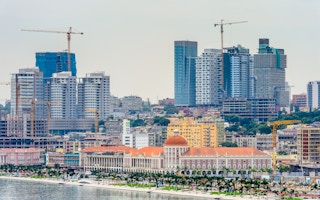Africa’s rise is in danger of faltering. After years during which the continent’s economy grew at an average annual rate of five per cent, global uncertainty, depressed commodity prices, and jittery external conditions are threatening to undermine decades of much-needed progress. Ensuring the wealth and wellbeing of the continent’s residents will not be easy; but there is much that policymakers can do to put Africa back on an upward trajectory.
To continue reading, subscribe to Eco‑Business.
There's something for everyone. We offer a range of subscription plans.
- Access our stories and receive our Insights Weekly newsletter with the free EB Member plan.
- Unlock unlimited access to our content and archive with EB Circle.
- Publish your content with EB Premium.
First and foremost, policymakers must secure the financing needed to pursue sustainable development in an uncertain global environment. The World Bank estimates that Africa will require at least $93 billion a year to fund its infrastructure needs alone. Climate-friendly, sustainable infrastructure will cost even more. And yet, as long as global growth remains weak, Africans cannot count on developed countries to fully honor their commitments to help attain the Sustainable Development Goals.
Africa must rapidly develop its own resources, beginning by nearly doubling tax revenues. Across Sub-Saharan Africa, tax revenues account for less than one-fifth of GDP, compared to more than one-third in OECD countries. This means there is plenty of room for improvement. From 1990 to 2004, for example, Ghana reformed its tax system and raised revenues from 11 per cent to 22 per cent of GDP. Admittedly, such progress is difficult; in Nigeria, we saw an opportunity in raising non-oil tax revenues, but struggled to seize it.
Another source of domestic resources is the roughly $380 billion in pension assets held by just ten African countries. Policymakers should be leveraging these considerable sums.
At the same time, African countries will have to find a way to diversify their economies. Diversification requires investment in the future, in the form of education and well-developed infrastructure, including telecommunications, power, roads, rail, and water.
There are plenty of models to follow: Dubai, Singapore, Thailand, Malaysia, Mexico, Indonesia, and South Korea are all admired by Africans as economies that managed to transform themselves.
Dubai, for example, set out more than three decades ago to prepare for a future without oil. The government implemented a step-by-step transformation of the country into a service economy, putting in place the infrastructure and incentives necessary to build up financial services, tourism, medical services, real estate, media, arts, and culture. South Korea and Singapore, which had few natural resources on which to rely, are no less inspiring.
The secret behind these countries’ success is relentlessly focused leaders, whether entrenched but benign dictators or democratically elected politicians with a shared vision of a broad-based economy. Sub-Saharan Africa has paths for diversified growth that many of the trailblazers did not: value-added agriculture and agro industry, the processing of mineral resources, petrochemical complexes, manufacturing of durable and consumer goods, tourism and entertainment, and an emerging information-technology sector.
As the necessary measures for diversification are implemented, policymakers must ensure that the economic growth they are pursuing creates jobs. Sadly, this has not always been the case. Much of the recent growth has benefited only a few, leaving many behind – most notably young people and women. From 2006 to 2013, inequality rose in many of the continent’s most important economies, including South Africa, Nigeria, Ghana, Tanzania, and Rwanda.
These were challenges that we were starting to address in Nigeria when I was finance minister. We knew that we needed not just to secure growth, but also to improve the quality of that growth.
“
There are plenty of models to follow: Dubai, Singapore, Thailand, Malaysia, Mexico, Indonesia, and South Korea are all admired by Africans as economies that managed to transform themselves.
To that end, policymakers must ensure that growth is channeled into sectors that create jobs, such as agriculture, manufacturing, and services. They may also have to redistribute income and strengthen social safety nets to protect better those at the bottom of the ladder.
Matching skills to job opportunities will be crucial. Some 70 per cent of Africa’s population is under 30, and the continent is home to half the world’s primary-school-age children who have been deprived of the opportunity to study. Offering Africa’s children basic reading, writing, and technology skills, as well as vocational, technical, and entrepreneurial training, must be a top priority.
Weak health-care systems must also be strengthened in order to tackle the endemic diseases that sap productivity, such as malaria, as well as improving preparedness for outbreaks of deadly epidemics. The stakes are high. The World Bank estimates the Ebola outbreak shrank the economies of Sierra Leone, Guinea, and Liberia by 16 per cent.
As the world economy sputters, African countries will have to develop trade with one another. In 2013, African goods and services accounted for just 16 per cent of trade within the continent, and just over 3 per cent of world trade. One problem is that most African countries produce the same type of commodities and trade them with very little value-added. Policymakers must encourage greater specialization; differentiated goods and services will add value and volume to trade.
Logistics pose another obstacle to intra-African trade. Policymakers must make it easier to move goods across borders, by improving connectivity between countries and reducing bureaucratic hurdles and administrative costs. For example, road transport tariffs across Africa are estimated at $0.05-$0.13 per ton-kilometer, compared to the average of $0.01-$0.05 for all developing countries.
The Rift Valley Railway project, which will eventually link Mombasa on the Kenyan coast to Kampala in Uganda, is a good example of the benefits that investments in transportation could provide. The African Development Bank estimates that it will double the volume of trade between the two countries, while reducing marginal costs by 30 per cent.
As they make these investments, policymakers must not forget that much of Africa’s recent growth can be credited to good macroeconomic policies and sound economic management. Extending the continent’s rise will require strengthening the continent’s economic fundamentals.
This means ensuring that prices in the economy are correct, starting with the exchange rate. Some countries may need temporary controls to curb damaging capital outflows, but policymakers should aim for a market-based exchange rate and a solid plan for governing inflation, debt, foreign-exchange reserves, current accounts, and fiscal balances.
Africa’s potential can hardly be overstated. The continent is well placed to build diversified economies based on low-carbon, sustainable infrastructure. But policymakers cannot simply assume that Africa’s rise will continue. They must take the right steps to ensure that it does.
Ngozi Okonjo-Iweala is a former finance minister of Nigeria, and a distinguished visiting fellow at the Center for Global Development.
Copyright: Project Syndicate, 2016.
www.project-syndicate.org











